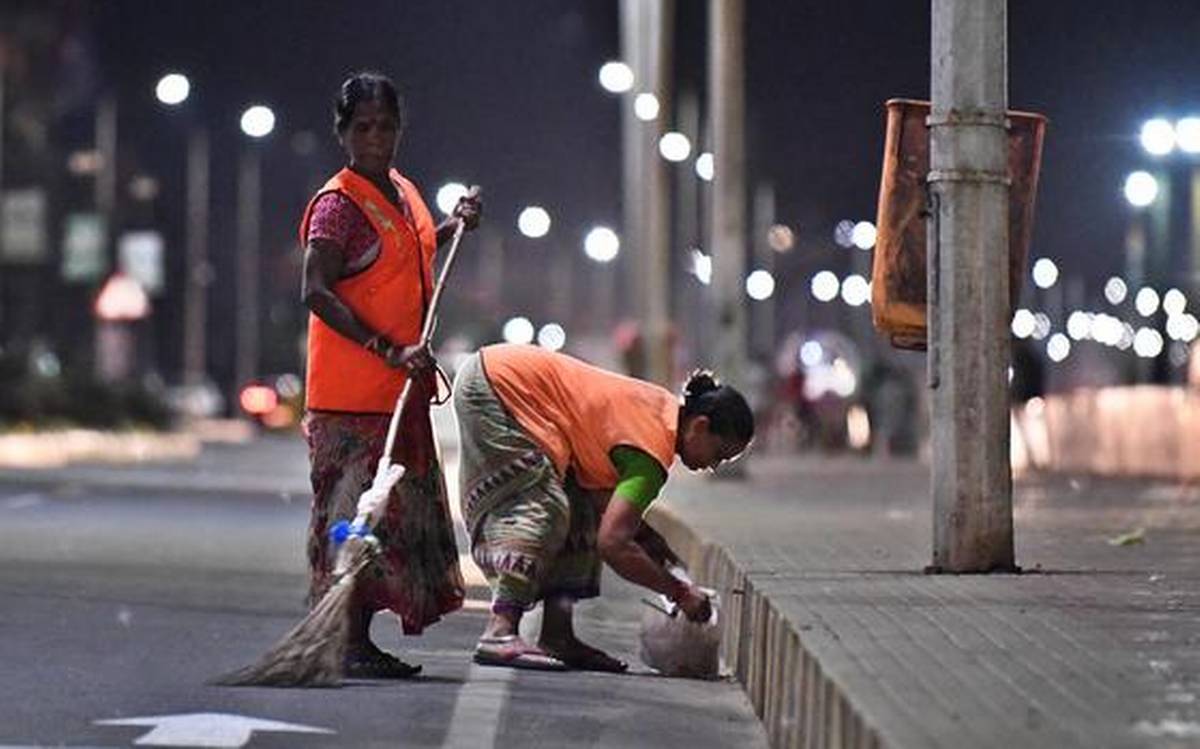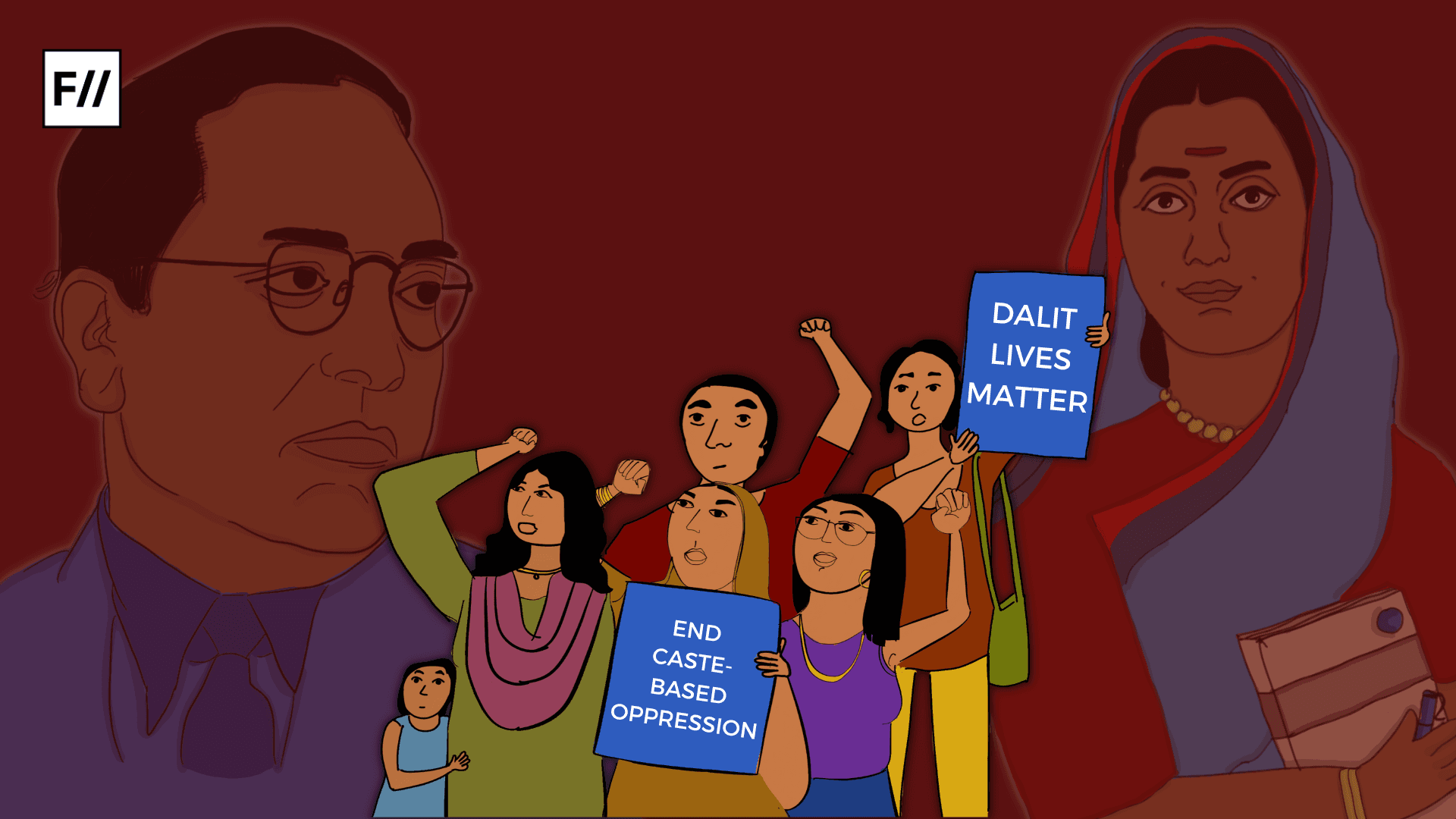Editor’s Note: This month, that is April 2020, FII’s #MoodOfTheMonth is Dalit History, where we invite various articles about historical moments in Dalit movements as well as Dalits (Ambedkar, Savitribai Phule) in history who have been part of the anti-caste movement in India. If you’d like to share your article, email us at pragya@feminisminindia.com.
History bears testimony to the fact that unlike most of the world, India is not new to the practice of social distancing. Maintaining social as well as physical distance has been historically entrenched in various forms of isolation by the upper castes in the Hindu social order ever since the Vedic times. Based on the religion of Hinduism and its scriptures, social distancing, which today is claimed to be the only curative measure for COVID-19, has always been used as a socially-sanctioned weapon of mass social disruption and collective discrimination against the lower castes and Dalits in the Indian subcontinent. It has been a part of India’s unjust history and continues to be a reality even in India’s fight against corona.
“The virus does not see race, religion, color, caste, creed, language or borders before striking“, while this sugar-coated, seemingly unbiased statement from the Indian government has been popularly embraced and globally revered, it does not take away from the fact that it was extremely redundant and unapologetically insensitive. Along with the statement—the declaration of national lockdown on 25th March 2020, the prescribed measure of social distancing, the nationwide imposition of Essential Commodities Act, virus testing guidelines and all other actions of the respective state agencies have been in complete disregard to the extreme differences and diversity of the country’s social and economic set-up.
Claiming that the virus would affect those who are living on the 24th floor of a luxury apartments in Mumbai and the Chamars and Musahar communities living in slum-cum-ghettos equally, is an attempt to homogenize the population while invisiblising those who are at the bottom of the socio-economic hierarchy of the caste system.
Turning a blind-eye to the caste-class hierarchy and their conterminous kinship in India, the state’s reaction to the virus has been nonetheless premised on such innate prejudices. Claiming that the virus would affect those who are living on the 24th floor of a luxury apartments in Mumbai and the Chamars and Musahar communities living in slum-cum-ghettos equally, is an attempt to homogenise the population while invisiblising those who are at the bottom of the socio-economic hierarchy of the caste system. Therefore, the popular belief that COVID-19 is much more unbiased than most of us, is itself smothered with biases which stems from the subsisting caste-class privilege.
It is however, true that the unprecedented nature of the crisis and its effects on the global economy, society, public order have been reasons enough to undertake stringent counteractive measures. In order to curb this contagious virus, the States had to enforce minimal physical interactions among its people. Evidently, what was needed was strict and regulated practice of ‘physical distancing’ rather than what seemed to be a worldwide drive to reinforce the casteist practice of social distancing.
This difference which was later addressed by the World Health Organisation was much more than a technical error in misreading of terminologies. Social distancing in India can never be interpreted in isolation to its historic and casteist backdrop. Based on the dogma of pre-destination and notion of purity, social distancing was and continues to be a Brahmanical practice of absolute ostracisation of the untouchables, Dalits and the lower castes. This callous use of terminology which may seem frivolous at first, necessarily illustrates the fundamental problem with our response and reaction to corona virus.
Not surprisingly, the mistake of prescribing social distancing instead of physical distancing has led to its appropriation by the Brahmanical and Caste fundamentalists. Claiming themselves to be the first ones to have coined this phenomenon in the ancient times, they have not just used the global recognition and acceptance of social distancing to legitimize and justify its use against the untouchables but have also called for its renewal.
Also read: How To Help Sanitation Workers During COVID-19?
The predicament of using social distancing as a global buzzword was just the tip of the iceberg. There is more than what meets the eyes. Caste system is that butterfly whose flapping wings have an effect on all kinds of interactions of an individual. From the way one dresses and lives and to the way in which once earns a living and makes a livelihood, caste is a compelling dictator which commands everything, including this virus. It is caste-based jobs such as scavenging, sanitation, drain-cleaning, their subsequent minimal social values, inadequate remunerations leading to unhygienic slum-based lifestyle which makes Dalit and Adivasi communities tormented not just by their caste identities and its repercussions but also by the fatal risks of COVID-19.
It is caste-based jobs such as scavenging, sanitation, drain-cleaning, their subsequent minimal social values, inadequate remunerations leading to unhygienic slum-based lifestyle which makes Dalit and Adivasi communities tormented not just by their caste identities and its repercussions but also by the fatal risks of COVID-19.
From the Yadani community (waste picker and drain cleaning community) of Andhra Pradesh which has been barred from purchasing essentials such as food and medicine by their upper-caste locales to children of Musahar community of Varanasi sustaining on grass, regardless of the noble intent, the lockdown was not just a preventive lockdown, it was a lockdown from access to food, water, shelter, medicines, livelihood, employment for many whose lives were just not important enough for the government’s consideration.
Regardless of the aetiology of Coronavirus, its transmission and propagation has evidently been caste-class based. From 25th March 2020, it was clear from the visuals of migrant workers on streets and highways that more than the virus, the lockdown and government’s response to COVID-19 were subjecting people to fatalities and near-death experiences. Along with this incessant stigmatisation that the Hindu religion has sanctioned, now the lower castes have also been left out of the government policies and subsidies.
From the healthcare schemes to availing direct cash transfers, every other mechanism which seeks to address these social and economic ‘have nots’ ends up becoming yet another unaffordable luxury or inaccessible privilege for them. The lockdown and absolute quarantine presume that everyone has a shelter in a country with 1.8 million homeless population.
Also read: COVID-19 Lockdown: Domestic Workers And A Class-Caste Divide
The Direct Money Transfer policy presumes that everyone has an active bank account. The requirement of providing government identification and documents to avail rations, subsidies and healthcare presumes that everyone is documented in an economy which is mostly informal. This presumed socio-economic well-being of all, in a society which has been fabricated on graded inequality is a manifestation of the kind of elitist indifference that characterises our current social landscape.
So, are we really all in it together? The answer is a firm no.
Anmol Ratan is a 2nd Year law student at National Law School of India University, Bangalore. His areas of interest are Constitutional Law, Human Rights, Critical Race Theory and Dalit-Feminist jurisprudence. He has worked in the past with human rights organisations such as Aga Khan Foundation, Commonwealth Human Rights Initiative (CHRI). He is currently serving as a Research Assistant to Prof. Sumit Baudh. He has also attended the LSE Summer School 2019. You can find him on Instagram, LinkedIn and Facebook.
Featured Image Source: News Click
About the author(s)
Anmol Ratan is a fourth-year law student at the National Law School of India University, Bengaluru. His core research lies in the field of critical race theory, law and development, international law and human rights law. He has previously authored articles on caste, gender, marginality intersectionality and the law. He is currently working as a Research Assistant
to Prof. Dipika Jain (Dean, Jindal Global Law School). He is also an editor at NLSIR, a flagship law review at the National Law School, Bengaluru.





This was EXCELLENT. Thank you for writing this unsparing analysis. We need more like this.